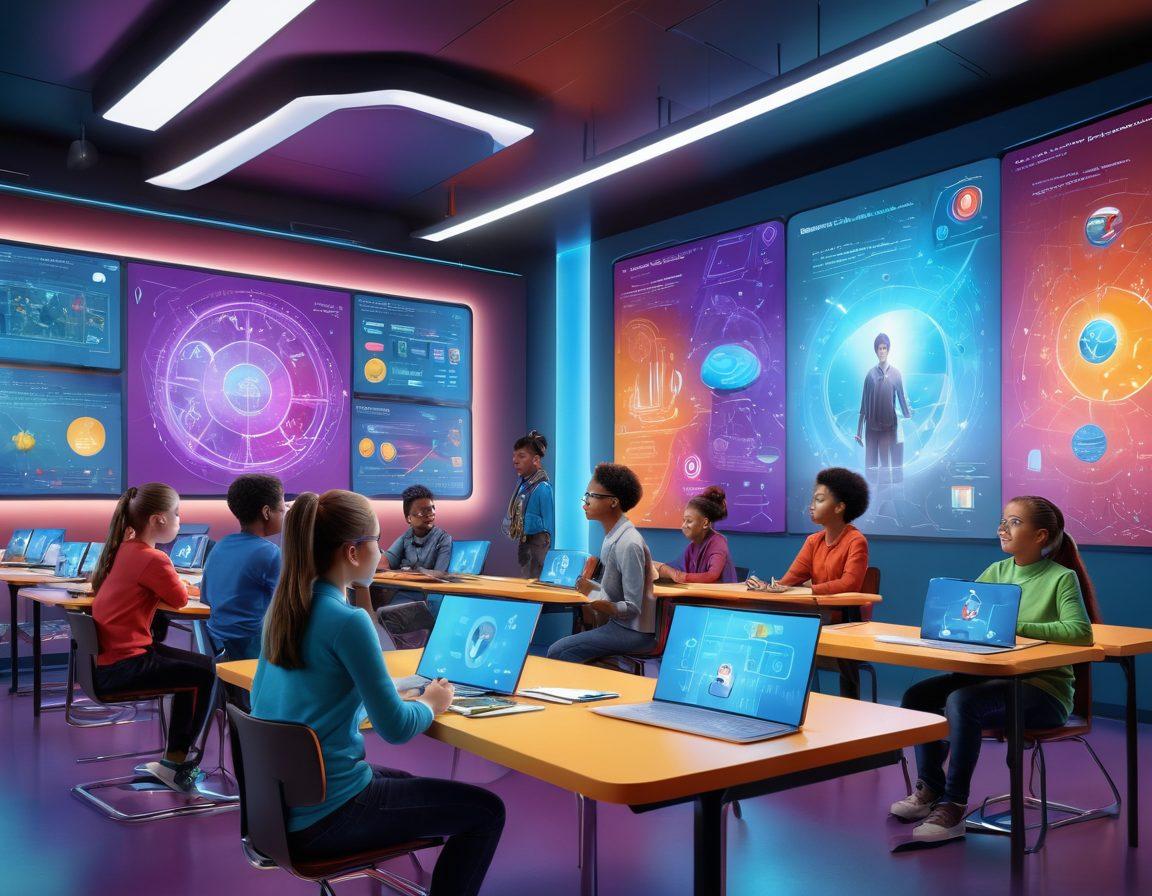Mastering the Art of Blogging in the Era of Virtual Assessments and Digital Learning
In a world where traditional classrooms are shifting to screens, the art of blogging has evolved into a vital tool for educators and learners alike. Have you ever wondered just how a well-crafted blog can elevate the learning experience in today’s digital learning landscape? As virtual assessments and online testing redefine education, blogs emerge not just as content creation platforms but as essential educational resources that facilitate interaction, understanding, and growth. Whether you're an educator looking to share study materials or a student navigating through elearning resources, getting your blog to stand out is more critical than ever.
Imagine walking through the halls of a digital educational platform where knowledge is shared seamlessly through the power of words. Blogging isn’t merely about expressing thoughts; it’s about creating a community rich in resources. Content creation in the context of education becomes a journey of discovery—not just for the writer but also for the reader. How can you encapsulate that dynamic into your writing? By crafting impactful posts that resonate, utilizing assessment tools that enhance the learning journey, and making your education blog a go-to resource for interactive assessments, you set the stage for a vibrant educational dialogue.
Let’s dive deeper into the essence of impactful content creation. When we think about blog writing, it’s easy to envision a singular viewpoint; however, storytelling is where the magic happens. Consider this: 'A great blog is not just written; it is crafted with intention.' By weaving narratives—experiences, successes, challenges—you engage your readers and make them feel part of your story. Bring them along on your journey with content that speaks to their needs in an educational context, such as materials designed for virtual assessments or study guides for online testing. The idea is to make them think, 'Wow, I can relate to this!'
Are you also aware of the sheer power of keywords in your blogging strategy? Blending in terms like 'digital learning', 'academic resources', and 'education technology' not only increases visibility but also helps in establishing your blog as a credible source of information. But be careful! Overstuffing your content with keywords can be counterproductive. Instead, aim for a natural incorporation that enhances readability. Your audience will appreciate the balanced narrative, and search engines will reward you for it. It’s all about finding that sweet spot where engagement meets optimization, creating a blog that stands the test of time in a rapidly changing digital landscape.
Finally, foster an open conversation through your blog. Encourage comments, share experiences, ask questions. Creating a sense of community transforms your blog from a static page into an interactive platform where readers feel valued and engaged. Assert your voice, but also listen to your audience. What are their struggles with web-based examinations? What could make their online testing experience smoother? Incorporating feedback and responding to inquiries will not only build loyalty to your blog but will also enhance the content you provide. Remember, in the world of blogging, collaboration and connection are just as important as the words you publish.
Navigating Web-Based Assessments: A Blogger's Guide to Engaging Educational Resources
In the rapidly evolving landscape of education, where virtual assessments and digital learning have taken center stage, blogging acts as a powerful tool to bridge understanding and engagement. As educators and students alike adapt to online environments, the role of the education blog becomes increasingly crucial. Can you imagine a world where blogging not only serves as a platform for sharing knowledge but also as a resource hub for web-based assessments and elearning resources? As we navigate this new terrain, let's dive into the essentials of content creation that can enhance your educational platform and engage your audience effectively.
Have you ever wondered how to transform your blog into a rich repository for study materials, assessment tools, and academic resources? With the rise of online testing, the demand for interactive assessments and engaging educational content is higher than ever. By focusing on your audience needs—students, educators, and parents—you can craft posts that resonate and provide real value. Think about how you can leverage your blog writing to create captivating narratives about digital learning experiences or uncover innovative methods for online assessment. What stories can you tell that will inspire others in this new virtual classroom?
One of the key benefits of blogging is its flexibility. Unlike traditional forms of content, a blog allows you to present information in various ways—videos, infographics, and written narratives come together to form an interactive experience. This versatility can make your blog a go-to source for information on virtual assessments and educational technology. Why not include real-life examples of how students succeed in online testing or how educators use digital tools creatively to make assessments more engaging? Such stories not only enhance reader engagement but also foster a sense of community among your audience.
As you navigate web-based examination topics, remember the importance of relatability in your writing. Share insights and tips that others can implement easily. Perhaps you’ve discovered unique elearning resources that are underappreciated but immensely helpful. By discussing these tools, you empower your readers with knowledge and options. Ask questions like, "What if you could utilize your blog to present an innovative approach to virtual assessments?" or “How can you turn struggling students into confident learners through better access to online educational resources?” These questions encourage reflection and discussion.
Finally, let’s talk about the act of engaging with your audience. Blogging is not merely about publishing content; it’s about building connections. Encourage comments, create polls, and respond to inquiries about your educational content, creating a dialogue that fosters learning. As you work on your education blog, think about how you can position yourself as a thought leader in the realm of digital learning—a mentor who guides readers through the nuances of web-based assessments and helps them thrive in today’s academic environment. Remember, the essence of blogging lies in the stories we share and the connections we make. Are you ready to embark on this wonderful journey?
Transforming Education Blogs: Strategies for Effective Content Creation in Virtual Assessments
In today's fast-paced digital landscape, where education is increasingly delivered through virtual assessments and digital learning, the art of blogging has taken on a transformational role. Gone are the days when blogs were merely personal musings; they are now essential educational platforms that guide students and educators alike. As we delve deeper into strategies for effective content creation in this arena, we must ask ourselves: How can we turn our education blogs into valuable resources that enhance engagement and support academic success?
Imagine a bustling classroom, where students eagerly share ideas and engage in interactive assessments. Now, picture that dynamic transformed into the digital sphere, where web-based examinations redefine traditional learning. Blogging in this context is all about creating a bridge between these two worlds. It allows us to provide learners with essential study materials that not only inform but inspire. As you craft your blog posts, consider the tools at your disposal, such as assessment tools and educational technology, to amplify the learning experience. The goal is to cultivate an atmosphere that encourages exploration and critical thinking.
Engaging storytelling is at the heart of effective blog writing. Have you ever considered how a well-crafted narrative can make complex information about elearning resources more accessible? When we draw on relatable anecdotes or share success stories from students who have thrived in online testing environments, we create an emotional connection with our readers. Remember the wise words of educator and author, Benjamin Franklin, who said, 'Tell me and I forget. Teach me and I remember. Involve me and I learn.' Your goal should be to involve your audience actively, making them feel part of a larger educational journey.
Varied sentence structure is crucial for maintaining reader interest, especially when discussing educational platforms or strategies for using academic resources effectively. Switching from longer, detailed descriptions to short, punchy sentences can create a rhythm that keeps your audience engaged. This conversational tone not only makes your content feel inviting but also cements your position as a trusted source in the realm of digital learning. Don't be afraid to ask intriguing questions that provoke thought, such as: 'How can we better utilize technology to make assessment more meaningful for students?'
Ultimately, the purpose of transforming education blogs through effective content creation in virtual assessments is to equip educators and learners with the knowledge they need to thrive. By focusing on delivering clear, actionable advice and integrating interactive assessments into your posts, you make your blog an indispensable resource. Encourage community engagement by inviting feedback and sharing experiences. Remember, in this digital age, collaboration is key to unlocking endless possibilities in education. So, let’s embrace the art of blogging and pave the way for a brighter future in the realm of education!


